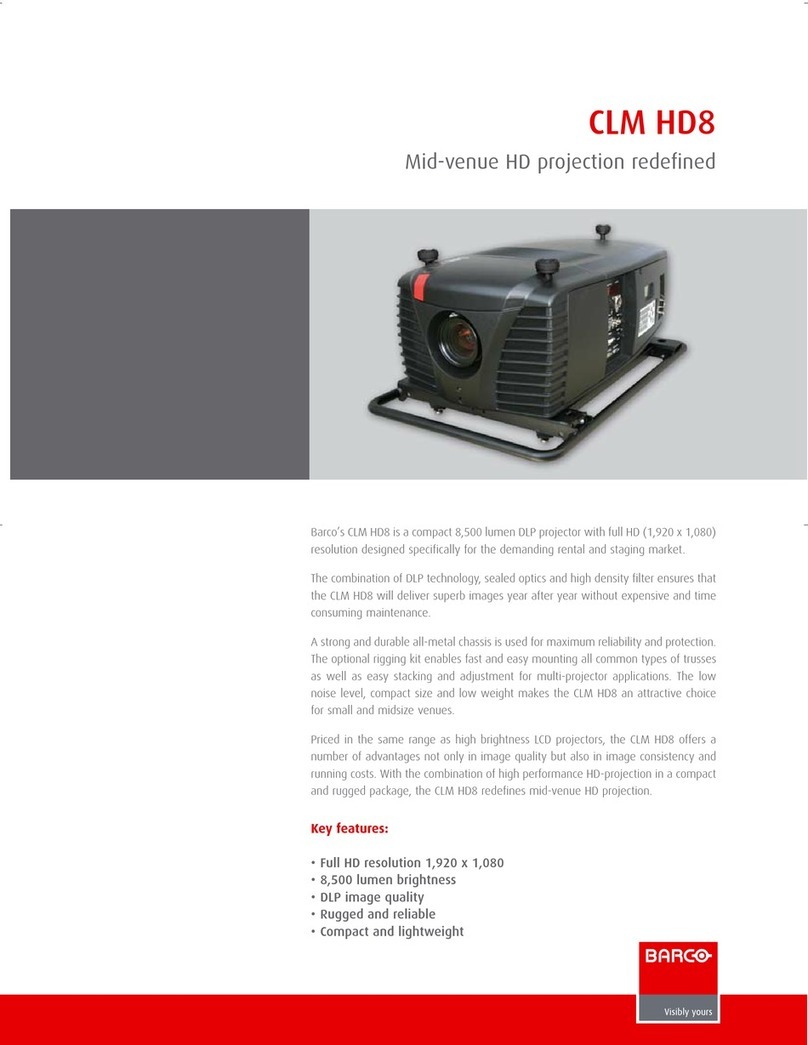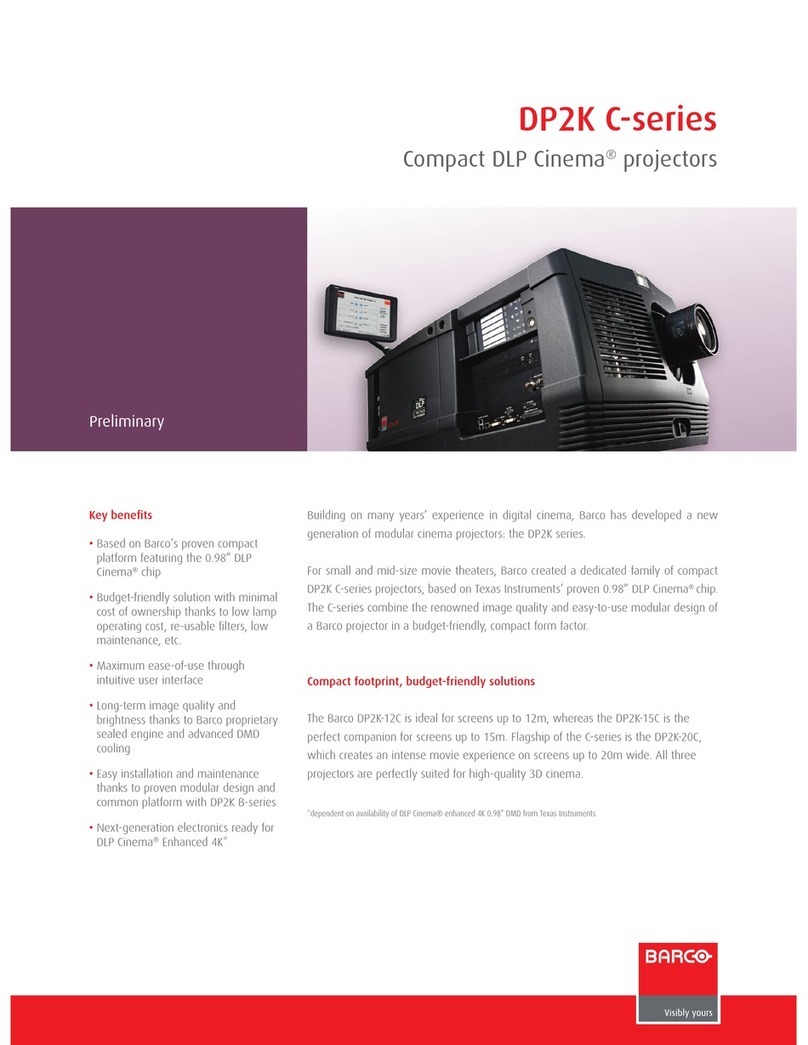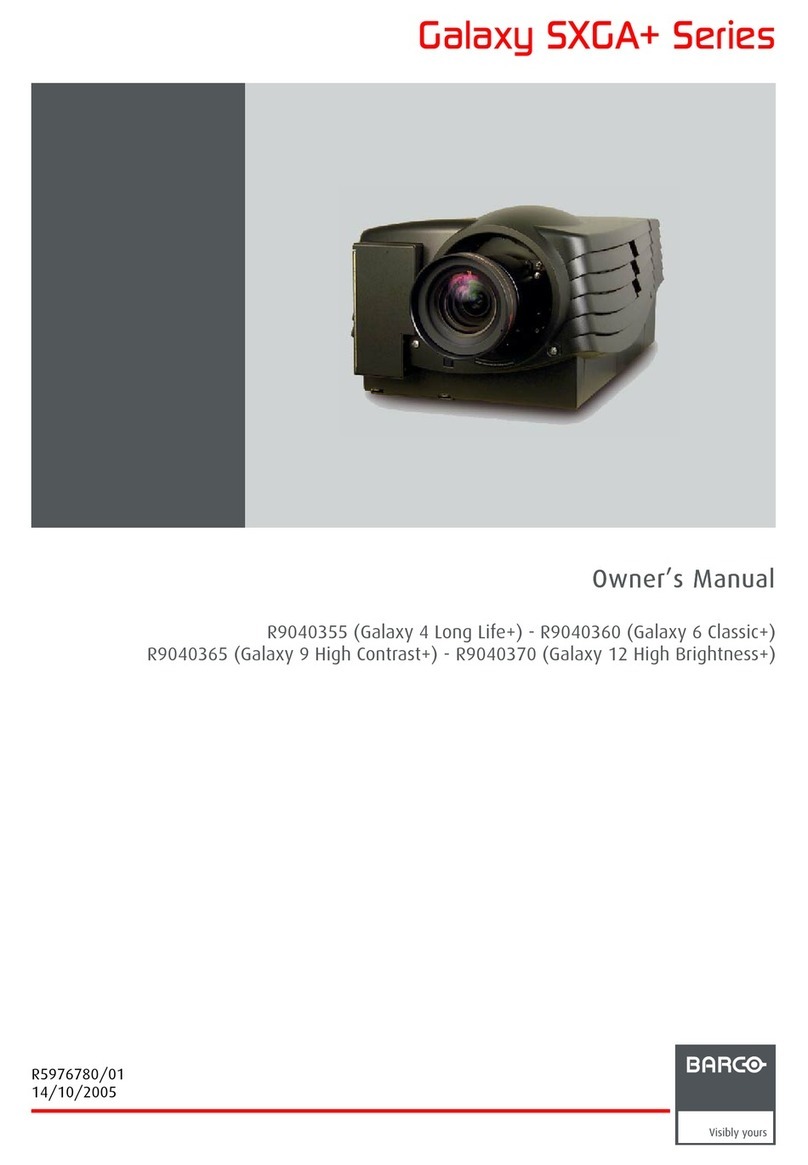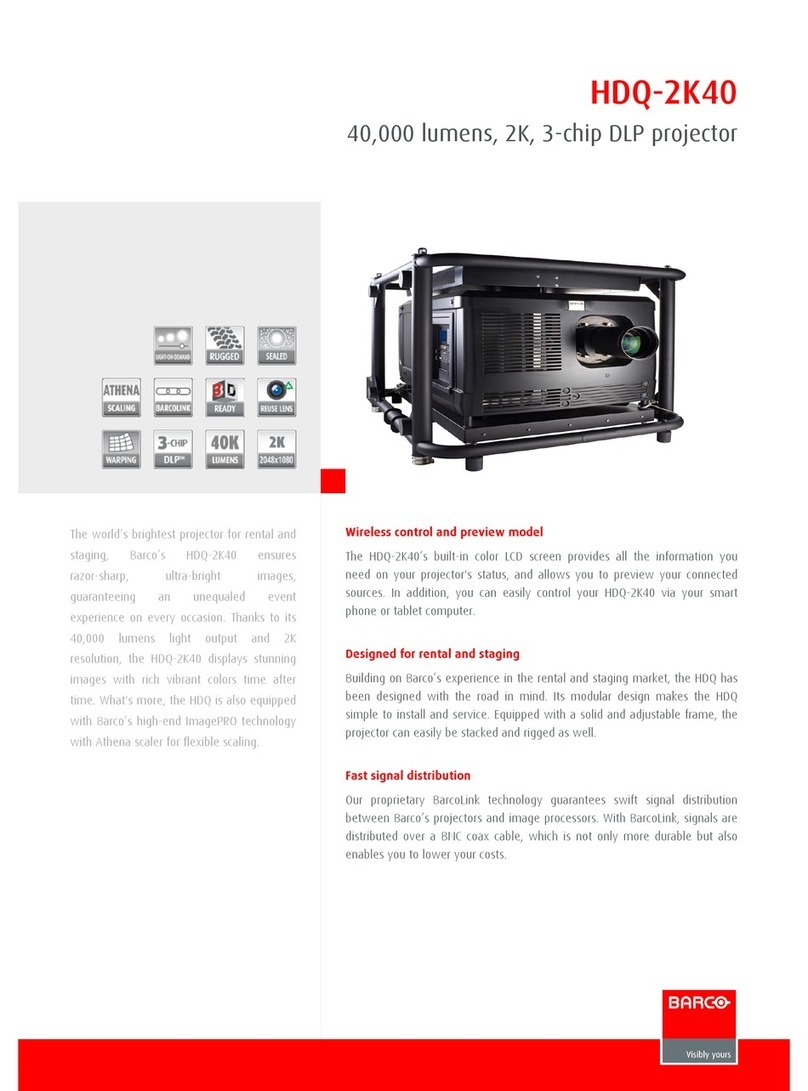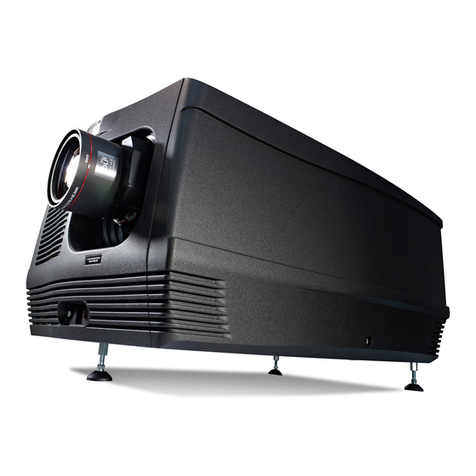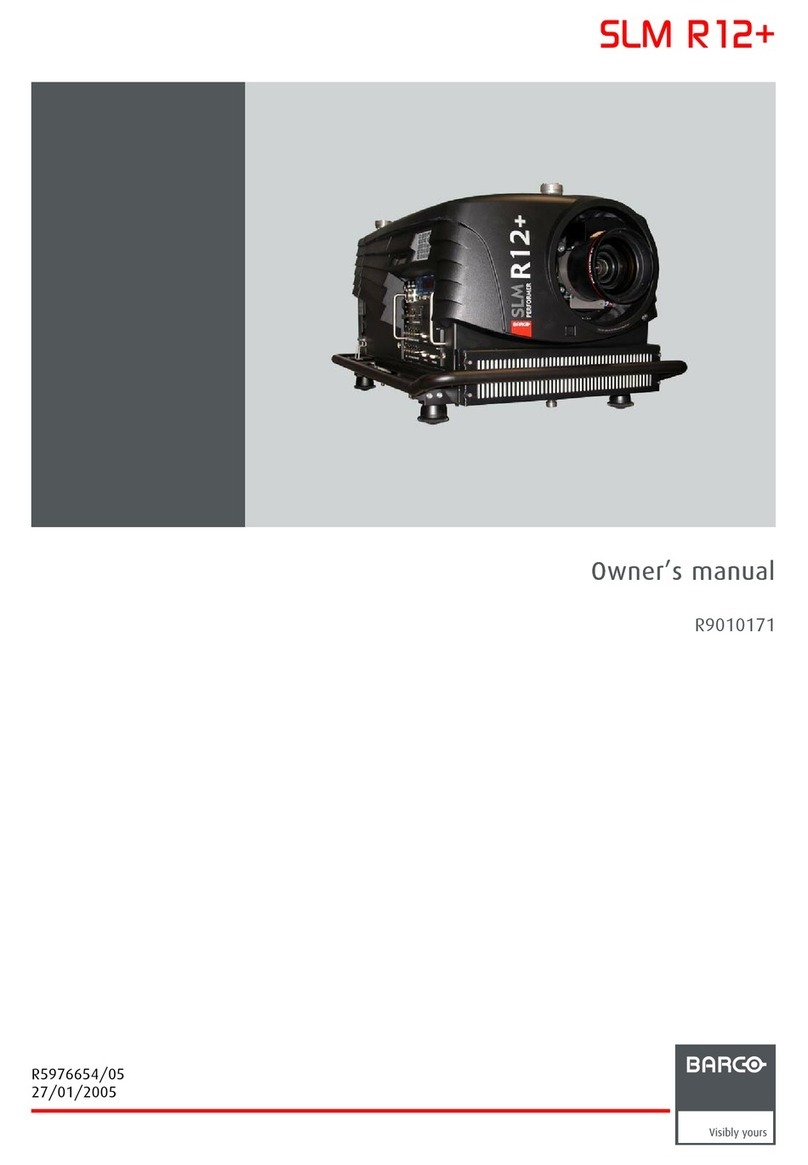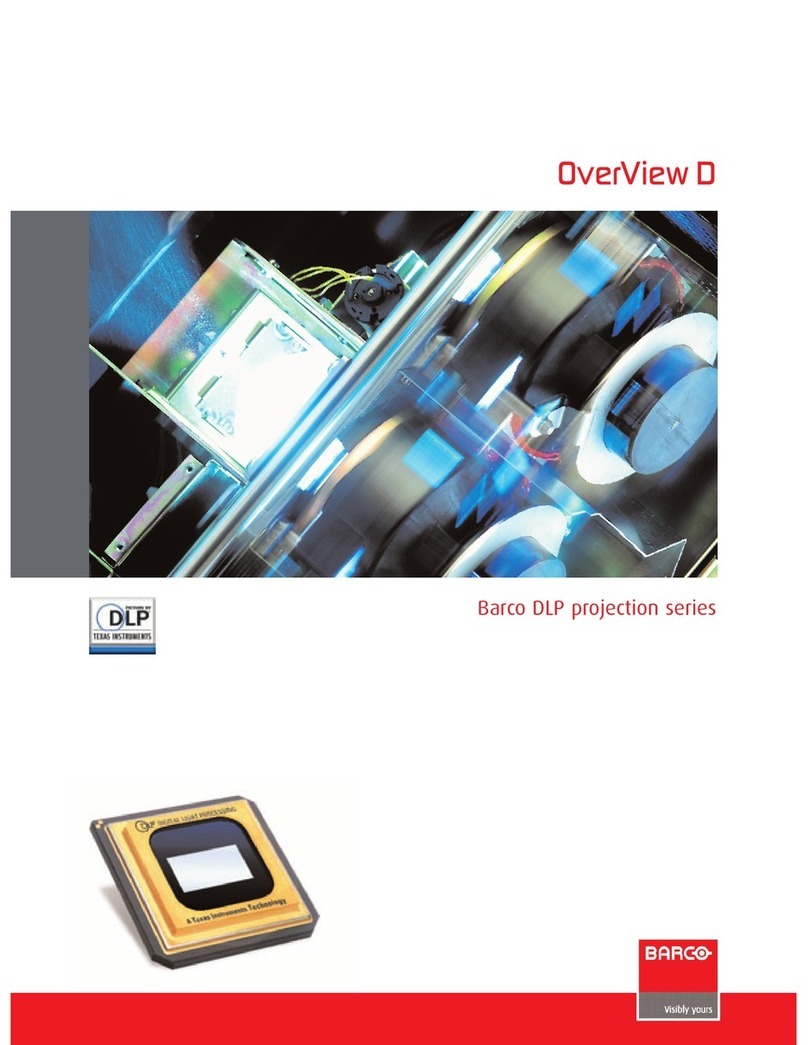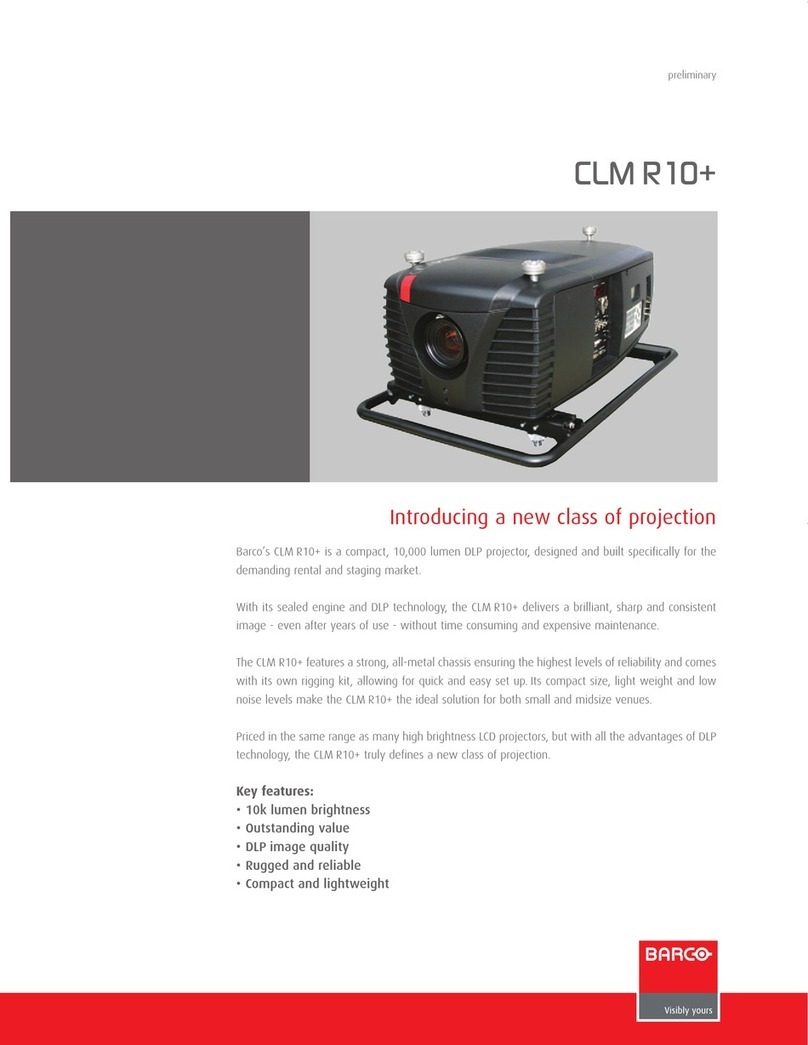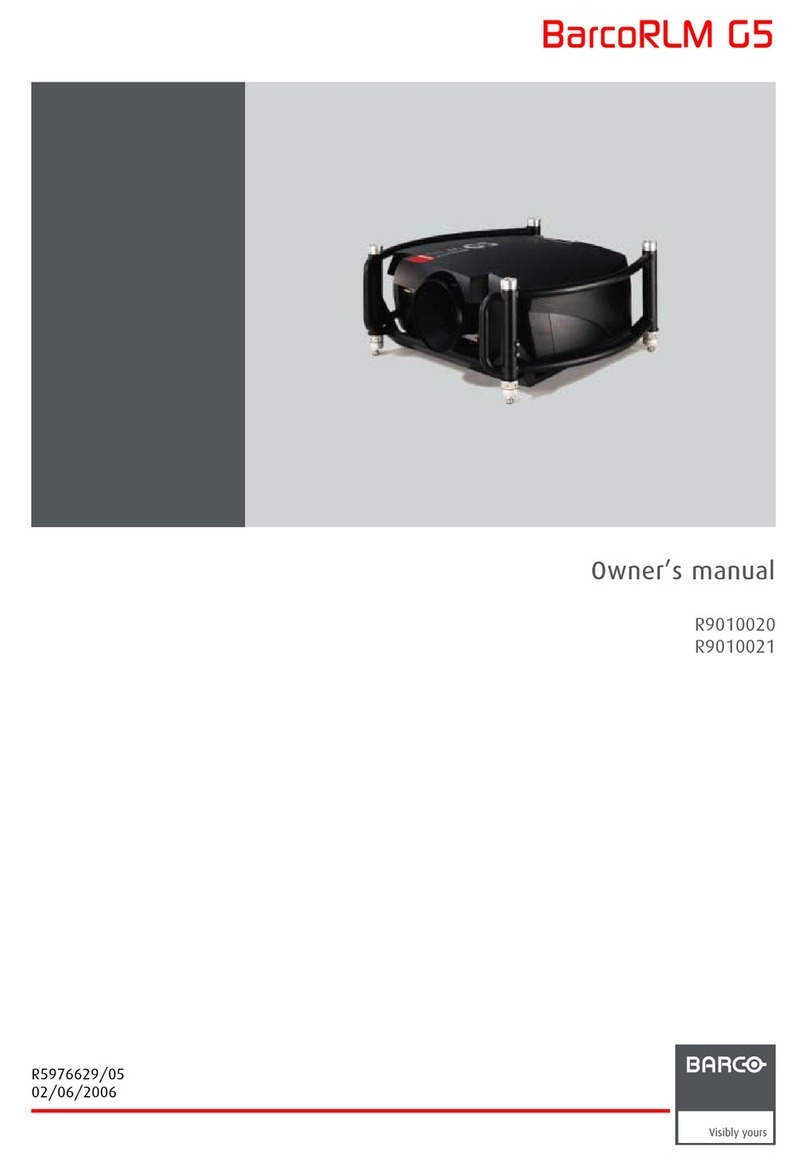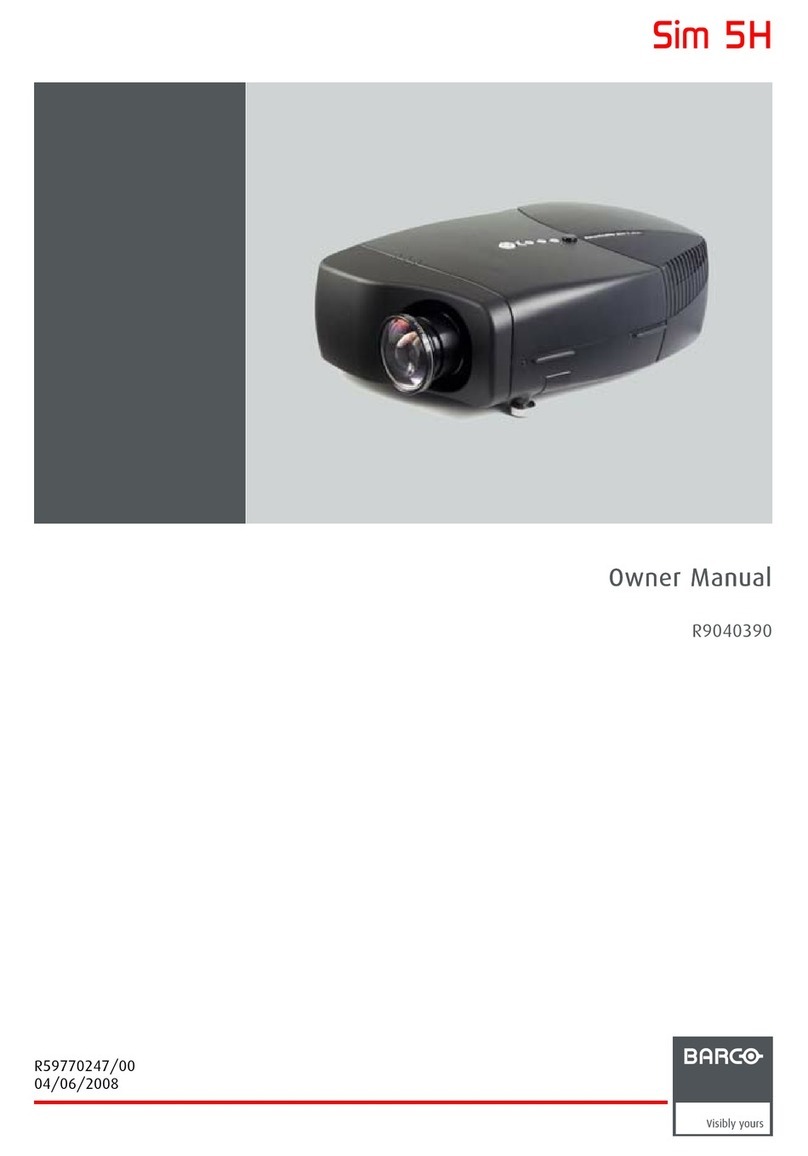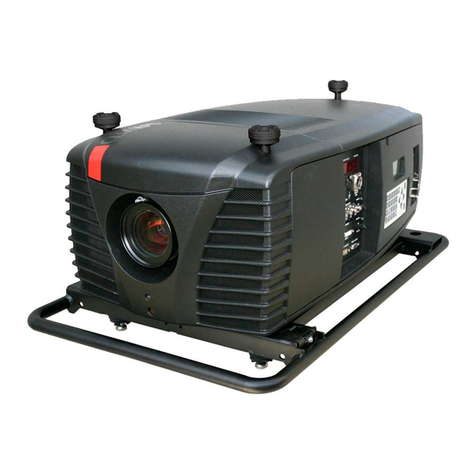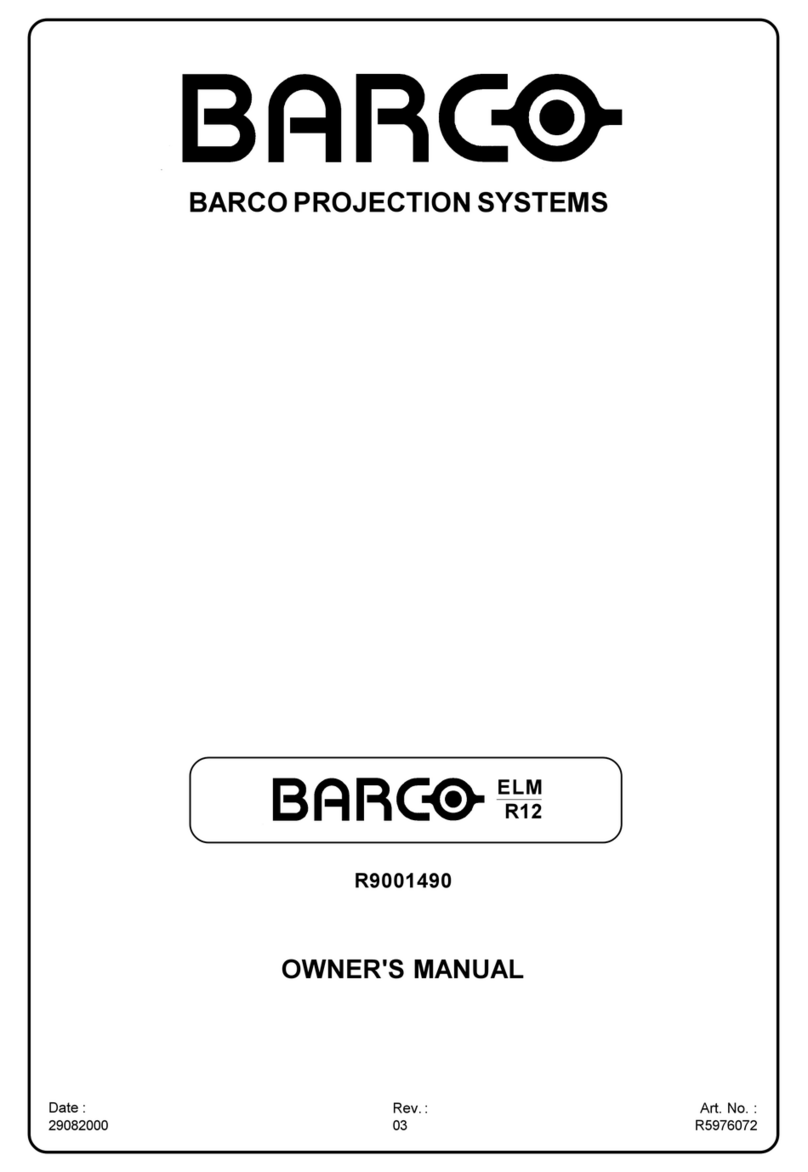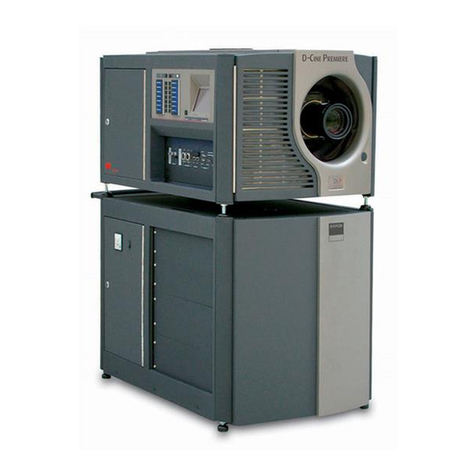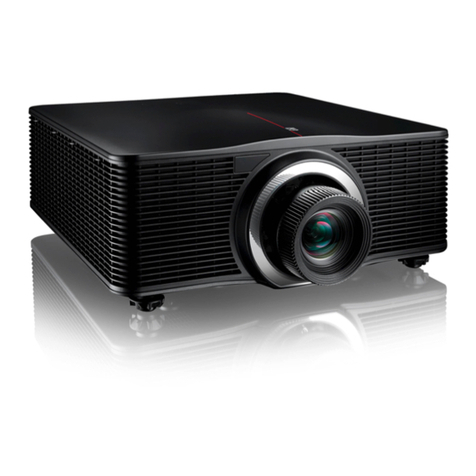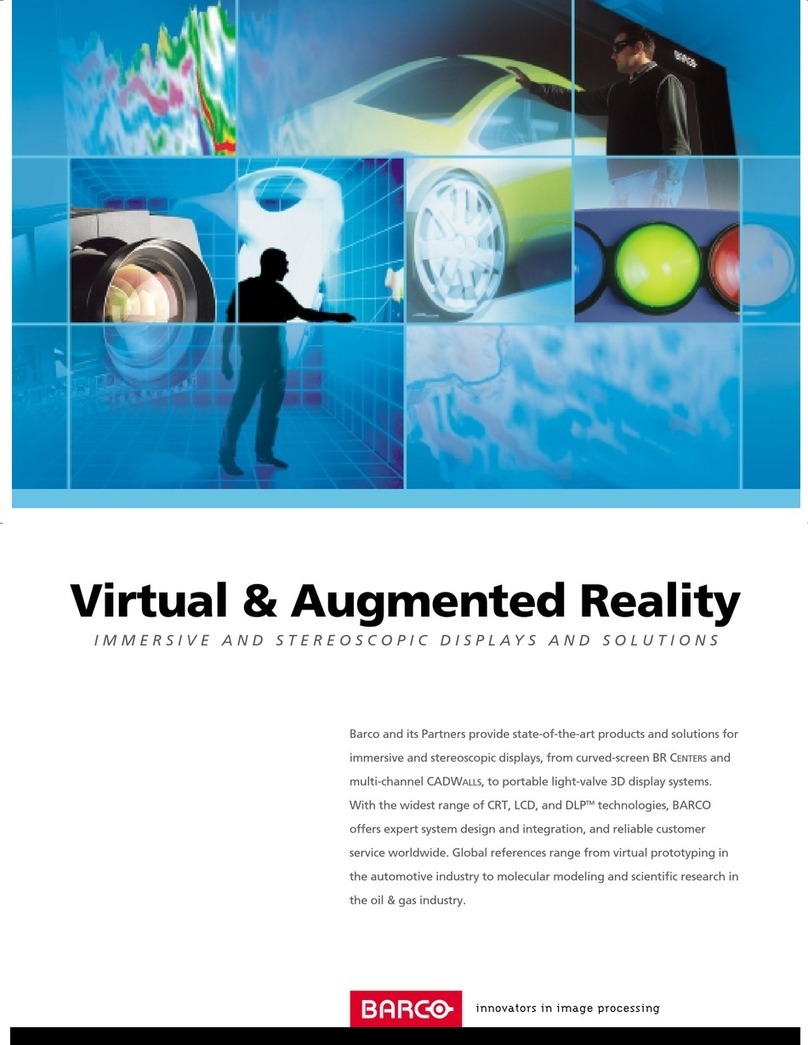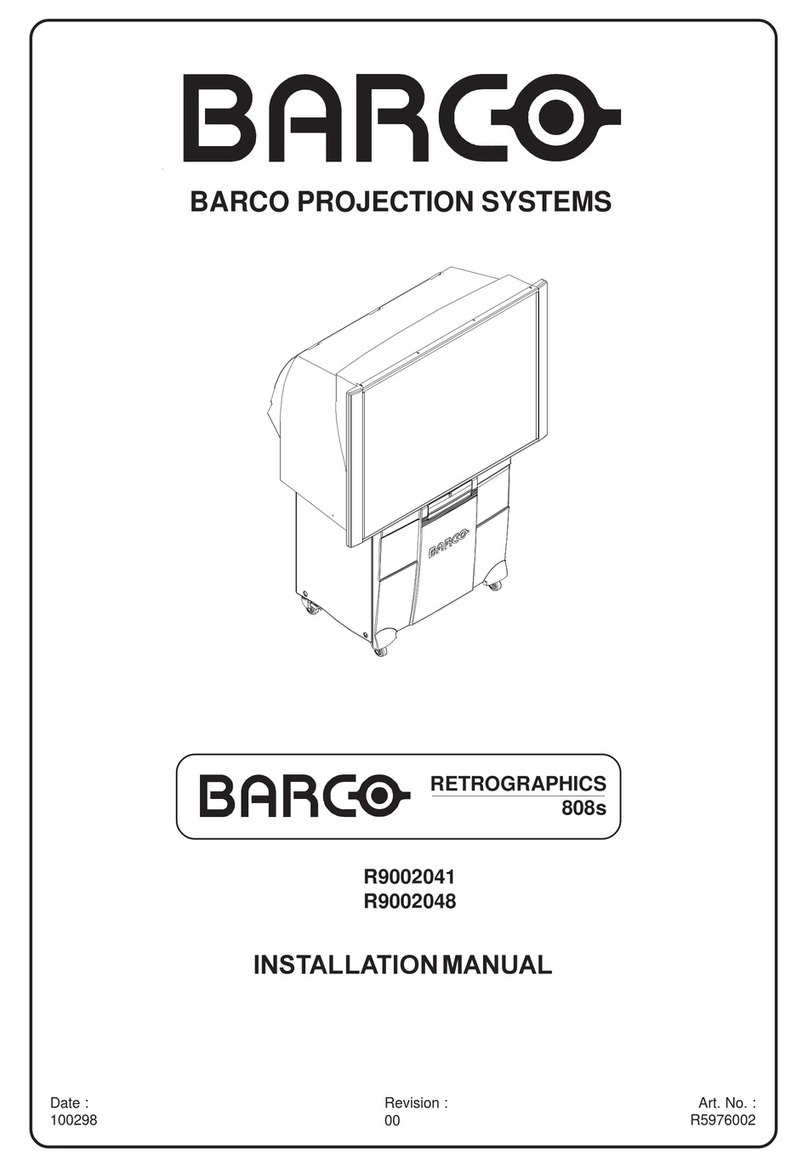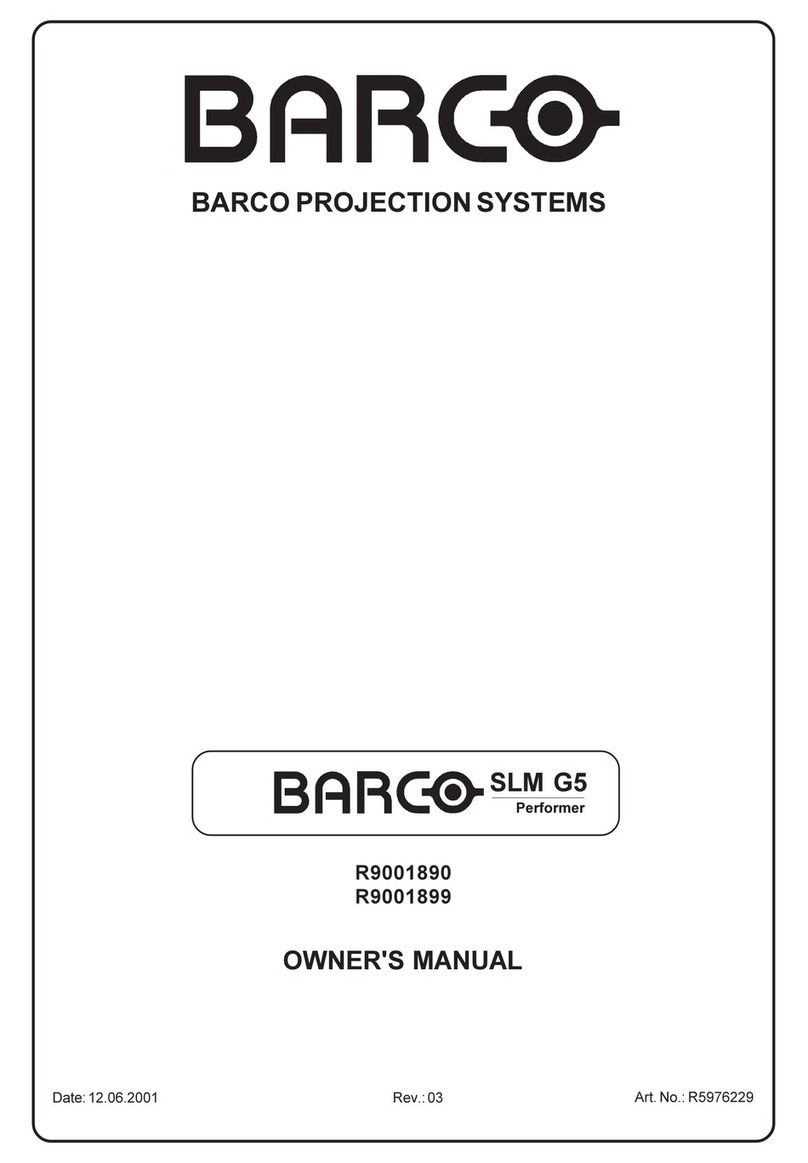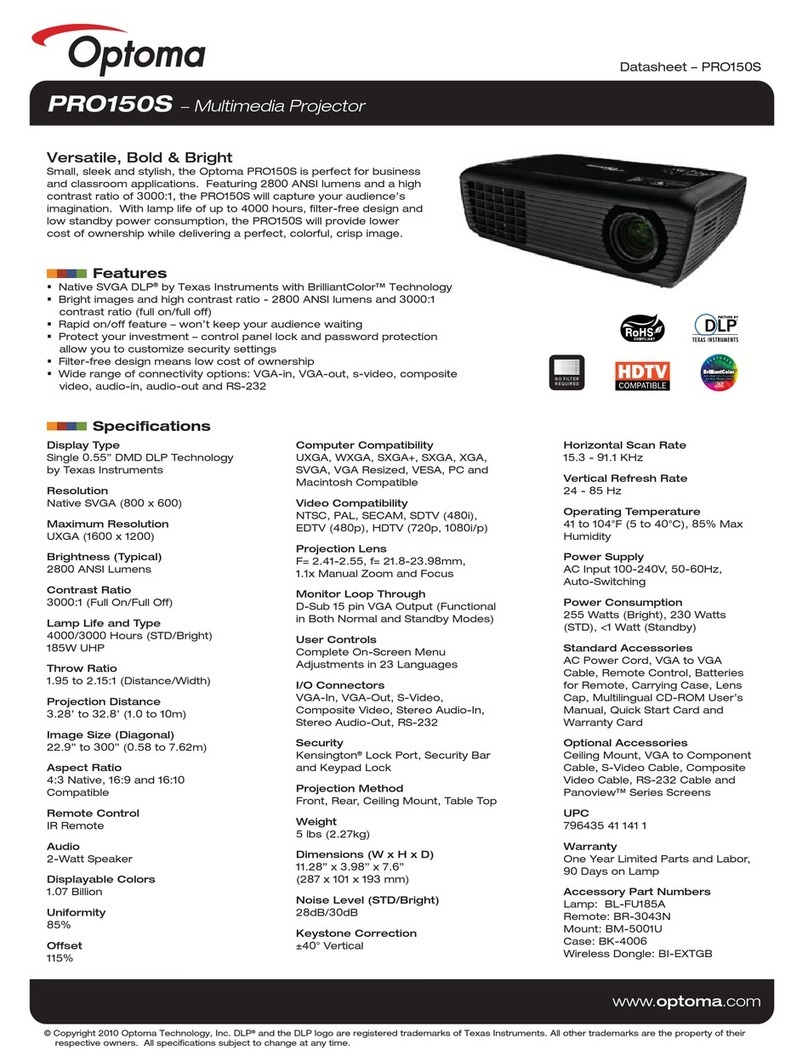
R5906897 /02 Prometheus III6
6.1 Available lenses.................................................................................................................................................................................64
6.2 Lens selection.....................................................................................................................................................................................64
6.3 Lens installation.................................................................................................................................................................................65
6.4 Lens removal.......................................................................................................................................................................................68
6.5 Lens shift, zoom & focus...............................................................................................................................................................69
6.6 Back Focal Length adjustment..................................................................................................................................................71
6.7 Scheimpflug adjustment ...............................................................................................................................................................75
6.8 Fixation of the Lens Holder front plate ..................................................................................................................................78
7Input & communication .............................................................................................................................................................................81
7.1 Introduction...........................................................................................................................................................................................82
7.2 Local keypad of the Prometheus III .......................................................................................................................................82
7.3 Integrated Cinema Processor (ICP).......................................................................................................................................83
7.4 HD-SDI Input Module (optional) ...............................................................................................................................................85
7.5 Quad 3G-SDI Input Module (optional) ..................................................................................................................................88
7.6 Integrated Media Block/Server (optional)............................................................................................................................94
7.7 Cinema Controller of the Prometheus III .............................................................................................................................95
8ICMP ........................................................................................................................................................................................................................99
8.1 ICMP introduction .......................................................................................................................................................................... 101
8.2 ICMP HDD ......................................................................................................................................................................................... 102
8.3 ICMP communication ports ...................................................................................................................................................... 104
8.4 ICMP source input ports ............................................................................................................................................................ 105
8.5 ICMP DisplayPort specifications ........................................................................................................................................... 106
8.6 ICMP SDI specifications ............................................................................................................................................................ 108
8.7 ICMP HDMI 2.0 specifications.................................................................................................................................................111
8.8 ICMP HDMI 1.4 specifications.................................................................................................................................................114
8.9 ICMP status LEDs ..........................................................................................................................................................................117
8.10 ICMP HDD status LEDs..............................................................................................................................................................118
8.11 ICMP device certificate................................................................................................................................................................119
8.12 ICMP configuration via Communicator .............................................................................................................................. 121
8.13 ICMP reset......................................................................................................................................................................................... 122
8.14 Obtaining the Barco ICMP certificate ................................................................................................................................. 123
8.15 Removing a HDD from the ICMP.......................................................................................................................................... 124
8.16 Installing a HDD into the ICMP............................................................................................................................................... 125
9Communicator Touch Panel................................................................................................................................................................ 127
9.1 Introduction........................................................................................................................................................................................ 128
9.2 Installation of the touch panel interface............................................................................................................................. 129
10 Starting up....................................................................................................................................................................................................... 133
10.1 Switching ON the Prometheus III ........................................................................................................................................ 134
10.2 Switching OFF the Prometheus III ....................................................................................................................................... 134
11 Removal and installation of the projector covers................................................................................................................ 135
11.1 Removal of the light source cover ........................................................................................................................................ 137
11.2 Removal of the rear cover......................................................................................................................................................... 138
11.3 Removal of the input cover....................................................................................................................................................... 138
11.4 Removal of the front cover........................................................................................................................................................ 139
11.5 Removal of the side cover ........................................................................................................................................................ 141
11.6 Installation of the front cover ................................................................................................................................................... 142
11.7 Installation of the input cover................................................................................................................................................... 143
11.8 Installation of the light source cover .................................................................................................................................... 144
11.9 Installation of the rear cover..................................................................................................................................................... 145
11.10 Installation of the side cover .................................................................................................................................................... 146
